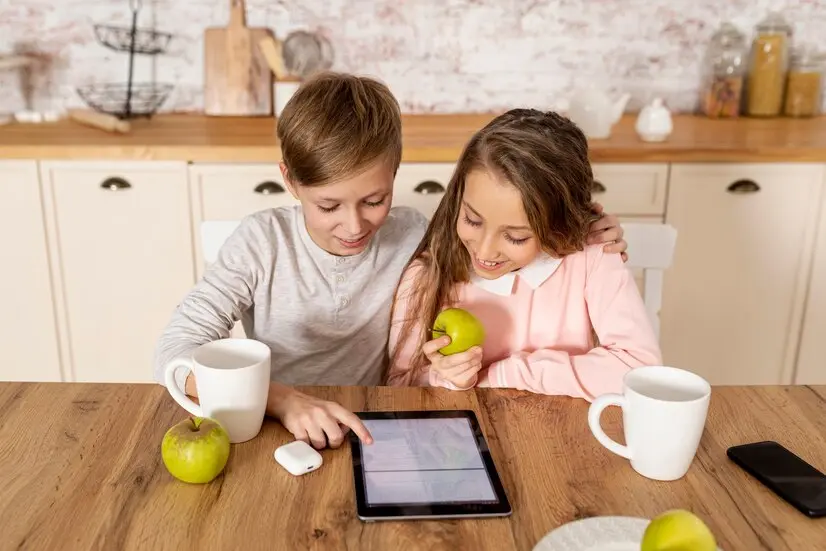In today’s world, screens are everywhere. From smartphones to tablets, laptops to televisions, screen time is an integral part of daily life. For teenagers, it’s especially true—many spend hours a day engaging with devices. However, while screen time offers many benefits, it can also come with significant drawbacks. As a parent, it’s essential to help your teen develop healthy screen habits. This guide will explore how to encourage a healthy screen lifestyle, balancing fun, social connections, and productivity with well-being.
Understanding Screen Time and Its Effects
Screen time is a part of modern life, but it’s crucial to understand both the positive and negative effects it can have on a teenager’s physical and mental health. Healthy screen habits aren’t just about limiting screen time; they’re about making sure that the time spent on devices is beneficial.
Psychological Impact of Excessive Screen Time
Excessive screen use can take a toll on mental health. Teenagers are especially vulnerable to the psychological impacts of technology. Constant exposure to social media can lead to feelings of isolation, anxiety, and depression. Studies have shown that teens who spend more time on screens, particularly social media, are at a higher risk of developing mental health issues.
However, this doesn’t mean that all screen time is harmful. For example, connecting with friends and family online can provide a sense of belonging. The key to a healthy screen lifestyle is balance—ensuring that teens are using their devices for meaningful interactions rather than passive scrolling.
Physical Impact of Excessive Screen Time
It’s easy to overlook the physical effects of too much screen time, but they’re just as significant as the psychological ones. Staring at screens for extended periods can cause eye strain, headaches, and blurry vision, often referred to as “digital eye strain.” It can also contribute to poor posture and back pain, especially if teens are slouched over their phones or sitting for long periods.
Additionally, excessive screen use is often linked to sedentary behavior, which can contribute to weight gain and other health problems. Encouraging your teen to take breaks from screens, stretch, and engage in physical activities can help mitigate these issues.
How Teens Use Screens
Understanding how teens are using screens can help parents guide their healthy screen habits more effectively. While every teen is different, there are some common activities that most engage in during their screen time.
Social Maintenance
One of the primary reasons teens use screens is to maintain social relationships. Social media platforms like Instagram, Snapchat, and TikTok are central to their social lives. Text messaging and group chats are also popular ways for teens to stay connected with friends.
While these platforms can offer a sense of connection, they also have downsides, including peer pressure, cyberbullying, and the pressure to present an idealized version of oneself. Parents can promote healthy screen use by encouraging their teens to engage in positive online interactions and limiting exposure to potentially harmful content.
Entertainment
For many teens, screens are a primary source of entertainment. Whether it’s watching Netflix, playing video games, or browsing YouTube, entertainment is a significant portion of their screen time. While some forms of entertainment can be educational, others may encourage sedentary behavior or expose teens to inappropriate content.
To foster a healthy screen balance, encourage your teen to choose entertainment that aligns with their interests and values. Consider setting limits on certain activities, like video games or binge-watching shows, while promoting more active forms of entertainment like interactive learning apps or creative activities.
School Work and Productivity
With remote learning and digital assignments becoming more common, screens have become essential for educational purposes. Teens now use their devices for homework, research, and studying. While this is a positive development, it’s important to ensure that screen time used for schoolwork is focused and productive. Setting clear goals for screen use and incorporating breaks can help prevent distractions and ensure that screen time supports academic success.
Setting Healthy Screen Time Boundaries
One of the most effective ways to promote healthy screen habits is by setting clear boundaries around screen time. However, this can be tricky for both parents and teens, as technology can sometimes feel all-encompassing.
Practical Tips for Parents
- Set Time Limits: Establish daily screen time limits based on your teen’s age, needs, and responsibilities. For instance, you might set 1-2 hours for recreational screen time on weekdays, with more flexibility on weekends.
- Screen-Free Zones: Create screen-free areas in your home, such as the dining room or bedrooms. This encourages more face-to-face interaction and helps prevent mindless scrolling.
- Tech-Free Times: Designate certain times of the day as screen-free, such as during family meals, before bed, or during study sessions. This helps teens disconnect and focus on other activities.
- Be a Role Model: As a parent, you also need to practice what you preach. If your teen sees you constantly on your phone or watching TV, they’re less likely to respect the screen time rules you’ve set.
Screen Time and Academic Performance
While screen time can be a useful tool for learning, it can also become a distraction. Excessive screen use can hinder a teen’s ability to focus on schoolwork, leading to procrastination and lower academic performance.
To encourage healthy screen use that supports academic success, help your teen prioritize tasks and use their device for educational purposes. Tools like productivity apps, study timers, and educational videos can help them stay focused and make their screen time more productive.
How to Make Screen Time Productive
Not all screen time is wasted. In fact, screens can be an excellent tool for learning, creativity, and personal growth. Here are some ways to make screen time productive:
- Educational Apps and Games: Many apps are designed to help teens learn new skills, whether it’s coding, learning a new language, or practicing math problems.
- Creative Pursuits: Encourage your teen to use screens for creative activities like graphic design, music production, or video editing. These activities can help them develop useful skills for the future.
- Mindfulness and Mental Health Apps: There are numerous apps designed to help with mental well-being, from meditation apps to mental health trackers. Introducing your teen to these resources can turn screen time into an opportunity for self-care.
Technology Use for Teen Mental Health
When used correctly, technology can play a positive role in supporting teen mental health. Online communities, therapy apps, and mental health resources can help teens feel supported and less isolated. By promoting healthy screen habits, you can help your teen use technology as a tool for personal growth, rather than a source of stress or anxiety.
Conclusion: Embracing Healthy Screen Habits
Encouraging healthy screen habits is a journey that requires understanding, patience, and active participation. While screens are an essential part of modern life, ensuring that they are used in a balanced and productive way will help your teen thrive both online and offline. By setting boundaries, promoting positive content, and making time for physical activity, you can help your teen build habits that will serve them well into adulthood. So, make sure to prioritize a healthy screen lifestyle and guide your teen towards a balanced digital future.

